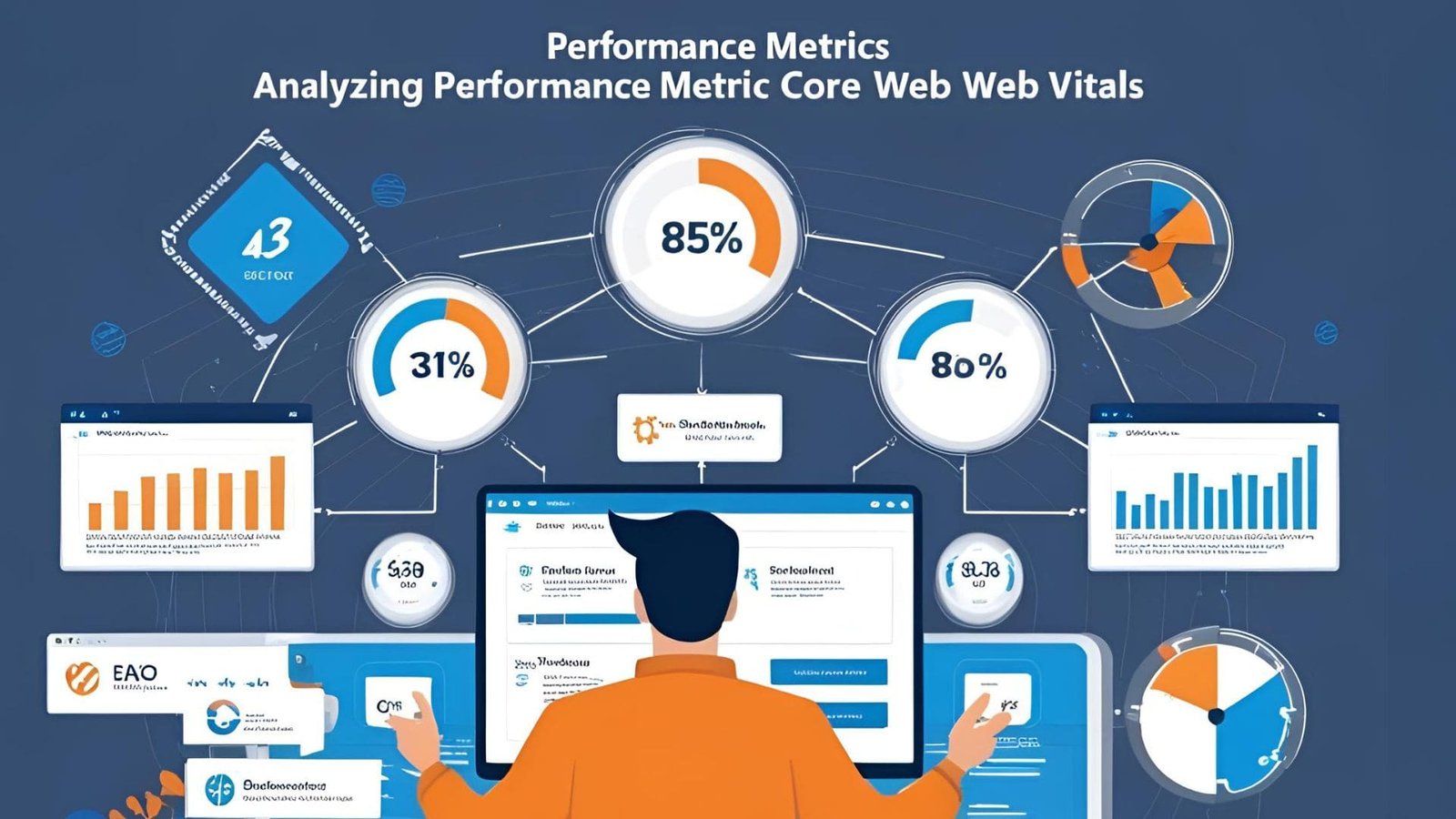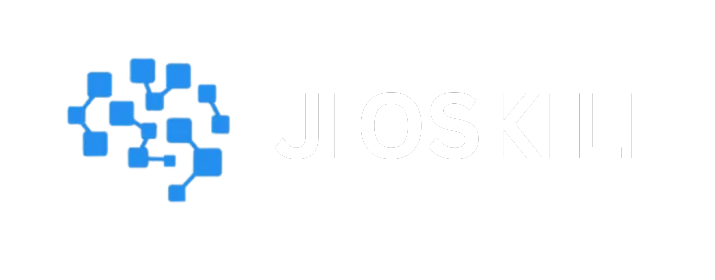Currently Empty: ₹0.00
What is SEO? A Complete Guide For Beginners
Table of Contents
ToggleWhat is SEO? How to Rank in 2025
Problem: You Have Content, But No One Is Seeing It
You’ve written a blog. Maybe more than one. You’ve shared your content on social media and even tried email marketing. But when you check Google, your site doesn’t appear on the first page. No clicks. No sales. No leads.
That’s the problem many content creators and businesses face. They create, but they don’t get found. The content is good, but it’s invisible.
The issue? No SEO.
Problem: Ignoring SEO Is Costing You Traffic and Growth
In today’s internet, publishing content isn’t enough. Every day, over 7 million blog posts are published. On YouTube, 500 hours of video are uploaded every minute. Competition is fierce, and without a smart strategy, your content will sink.
Here’s what happens if you ignore search engine optimization:
- You get buried under better-optimized pages.
- You miss out on free traffic from Google, YouTube, and Bing.
- You stay dependent on paid ads.
- Your brand remains unknown.
Whether you’re a small business or a solo blogger, SEO, or search engine optimization, is no longer optional. It’s the difference between ranking and disappearing.
- What is SEO optimization? What is SEO?
- How to rank in 2025
- Ranking in 2025 Requires a New SEO Playbook
- What is a backlink
- What is search engine marketing
- What is it today is context
- Search engine optimization on YouTube
What is SEO? How to Rank in 2025
Problem: Why Most Websites Still Don’t Rank
It’s 2025, and yet the same problem persists: Over 90% of web pages get zero traffic from Google, according to a study by Ahrefs. That’s not just frustrating. It’s brutal. You spend time writing content, optimizing pages, tweaking metadata, and still, your site is buried on page five of search results, or worse, nowhere at all.
Why does this happen?
Because SEO is no longer about stuffing keywords or buying backlinks. The guidelines have been modified. In only the last 24 months, Google has released 15 significant algorithm changes, and AI-powered features like Search Generative Experience (SGE) are upending the search market.
However, the majority of website owners continue to use SEO strategies from 2015.
Let’s face it: ranking in 2025 requires a thorough understanding of how search engines operate today, user behavior, and what material truly adds value. It is not about hacking Google.
The New Reality of SEO
There was a time when adding the right keywords and building a few backlinks could put you on the first page of Google. But as search engines evolved, they started prioritizing user intent, search experience, and content utility over simple on-page signals.
Why Your Old Tactics Don’t Work Anymore
Here’s what’s different now:
- Search Generative Experience (SGE): AI is now part of the search interface. It gives users instant answers, summaries, and product comparisons. If your content doesn’t help AI generate that answer, you’re invisible.
- Search Intent Complexity: Users don’t just type “shoes” anymore. They type “best running shoes under $150 for flat feet.” You can’t rank unless your content speaks directly to that intent.
- Content Saturation: According to Internet Live Stats, over 7.5 million blog posts are published daily. That’s a flood. Generic content gets buried.
Still think SEO is just about tweaking a few meta tags? Think again.
Solution: Rankings in 2025 Demand a New SEO Playbook
Let’s break it down. If you wish to rank in 2025, this is what you need to prioritize.
1. Understand Search Intent Like a Researcher

Search intent is the “why” of a query. Google can now accurately detect it. If someone searches “best laptops for college students 2025,” they’re not necessarily looking at specifications. They desire
- A Comparison of Top Models
- Budget and Performance Analysis
- Customer reviews or case studies
- Recommendations based on majors
- To achieve top positions, your content needs to reflect the user’s journey. This implies
- Expect subsequent questions
- Provide actionable information
- Add decision-support layers (e.g., pro/con tables)
- Utilize tools such as AlsoAsked, Google’s “People Also Ask,” and Surfer SEO to chart out associated queries.
2. Build Topic Clusters, Not Isolated Posts
- One-offs aren’t good enough anymore.
- To establish authority in a niche, form topic clusters. Here’s how:
- An example of a pillar topic would be “telecommuting.”
The following in-depth articles revolve around it: “Best tools for remote teams,” “How to manage productivity remotely,” and “Remote work tax implications.”
3. Search Generative Experience (SGE) Optimization

SGE transforms everything. Google now displays AI-generated responses, summaries, and snippets in addition to the ten blue links that were previously displayed.
To remain in sight:
- In your material, immediately respond to inquiries.
- In the first 100 words, provide succinct summaries.
- Use headers to divide the text into distinct sections.
- Make use of schema markup (FAQ, Product, How-To).
Consider your page as an input source for Google’s artificial intelligence. Your content won’t be included in AI snapshots if it is too ambiguous, lengthy, or unclear.
4. Make Core Web Vitals Better

It’s important to move quickly. Rankings now heavily use Google’s Page Experience upgrade.
Important metrics:
- Less than 2.5 seconds is the largest contentful paint (LCP).
- FID (First Input Delay): less than 100 ms
- CLS (cumulative layout shift): less than 0.1
- To identify problems, use WebPageTest and Google PageSpeed Insights.
According to a Portent case study, websites that loaded in less than a second had three times the conversion rates of those that took five seconds or longer.
5. Produce First-Hand Experienced Content (E-E-A-T)
Google added Experience as an additional “E” to the E-A-T model in December 2022.
This implies that the authors of the content must be real persons who have done the subject matter.
Let’s imagine you are developing a manual on “Marathon training.”
Simply paraphrasing content from other blogs is insufficient. Google seeks indications that:
- The writer has completed marathons.
- Original images or logs are included in the content.
- There is a narrative or personal commentary.
- This raises rankings and builds trust.
Action item: Include clear sourcing, timestamps, and author biographies. Whenever possible, include personal anecdotes.
6. Use Multimedia and Repurposing Content to Your Advantage
These days, search is more than simply text. Google appears:
- Carousels in video
- Packs of images
- Excerpts from podcasts
- Decks of slides
- Thus, repurpose your material:
- Create YouTube videos from blog entries.
- Take quotes out of LinkedIn posts.
- Make Instagram carousels
- Utilize programs such as Descript to convert webinars into written content.
- You gain more real estate in SERPs the more formats you control.
7. Make Use of Actual Statistics and Data
Trust is not gained by making generic assertions. Actual data does.
- Utilize surveys, independent research, or reputable sources such as Statista
- Pew Study
- The Gartner
- Ahrefs
- SEMrush
Include statistics such as “Mobile devices accounted for 63% of organic search visits in the U.S. in 2024, Statista” in your work regarding mobile SEO, for instance.
8. Backlinks Are Still Important, Quality Over Quantity
 Backlinks remain in the top three ranking factors. However, spammy link building doesn’t cut it.
Backlinks remain in the top three ranking factors. However, spammy link building doesn’t cut it.
Instead, focus on:
- Digital PR: Pitch innovative stories or facts to reporters.
- Skyscraper Methodology: Take the best-performing content and create something superior.
- Guest blogging on niche-specific blogs.
Backlinko discovered that an average position #1 result at Google possessed 3.8x as many backlinks as results between positions 2–10.
9. Regularly Update Content
Stale content doesn’t last. Update old blog entries every 6–12 months to:
- Add new stats or studies
- Correct outdated links
- Improve formatting or visuals
- Save to the algorithm updates
New content indicates relevance.
Case Study: Siege Media refreshed an existing 3-year-old blog post about “best password managers.” Traffic increased by 78% in 30 days.
10. Analyze User Behavior to Track and Adjust
 SEO isn’t a set-it-and-forget-it strategy. Use Google Search Console, GA4, Hotjar, and Microsoft Clarity to monitor:
SEO isn’t a set-it-and-forget-it strategy. Use Google Search Console, GA4, Hotjar, and Microsoft Clarity to monitor:
- Bouncing rate
- Time on page
- Scroll depth
- Traffic click-through rate
These inform you where your content is going wrong. Repair what is broken, and experiment with variations.
Endnote: SEO in 2025 Is All About Providing Value, Not Tricks
Here’s the situation:
If your content does not address a challenge, inform an intention, or enable someone to do something improved, it will not rank.
SEO in 2025 is all about integrating:
- Hands-on experience
- Search intent alignment
- Technical performance
- Strategic content structure
- Measurable outcomes
Quick Checklist: SEO To-Do List for 2025
- Map content to real user intent
- Use topic clusters, not isolated posts
- Optimize for SGE and AI answers
- Nail Core Web Vitals
- Write with E-E-A-T in mind
- Repurpose content across formats
- Cite real data and stats
- Build backlinks through value
- Refresh and update old posts
- Track user behavior
What is a keyword?
A keyword is the word or phrase that a person types into a search engine.
Examples:
- “What is search engine optimization?”
- “SEO, what is i?t”
- “Check ranking for keyword”
- “What are backlink?s”
If you want to rank, your content must match the keyword the user is searching for.
In 2025, Google cares about keyword intent, not just the words, but what the person means when they search.
That means if someone searches “what is SEO optimization”, they don’t want a sales pitch. They want a clear, helpful explanation.
What is SEO Optimization?
SEO optimization is the process of making sure your content checks all the boxes that search engines look for.
Here’s what it involves:
- Using keywords naturally in your content
- Structuring pages with clear headings
- Linking to relevant internal and external resources
- Earning backlinks from trusted sites
- Speeding up your website
- Making your content mobile-friendly
All of these actions help search engines understand your content and trust your site.
What is a Backlink?
A backlink is when another website links to your content. Think of it like a vote of trust.
Backlinks are a key ranking factor. If trusted websites link to you, search engines are more likely to believe your content is credible.
But not all backlinks are good. Low-quality or spammy links can actually hurt your SEO in 2025.
In short, what is backlinks? They’re external votes telling Google your content deserves to rank.
What is Search Engine Marketing?
Search engine marketing (SEM) includes both paid ads and organic SEO efforts. But most often, SEM refers to paid ads on search engines, like Google Ads.
So, what’s the difference?
- SEO (search engine optimization) = Free traffic from ranking naturally
- SEM = Paid traffic from ads
They work together, but for long-term traffic that doesn’t cost you daily, SEO is your best bet.
SEO: What is It in Today’s Context?
In 2025, SEO is more than just keywords. It’s about matching intent, delivering fast-loading pages, and building authority over time.
Let’s look at how the SEO landscape has changed:
Focus on Keywords
- 2015: Keywords that match exactly
- 2025: Matching based on intent and semantics
Content Duration
- 2015: 500–1000 words
- 2025: more than 2000 paragraphs with insightful, practical material
Backlinks
- 2015: Quantity was important
- 2025: Relevance and quality are more important
The Optimization of Mobile
- 2015: Not required
- 2025: Required
Page Speed
- 2015: Not a top concern
- 2025: A crucial component in ranking
Artificial Intelligence Content
- 2015: Infrequent
- 2025: Typical, but in need of human improvement
Search Engine Optimization on YouTube
YouTube is the second-largest search engine. So yes, search engine optimization on YouTube is real.
To rank on YouTube:
- Use your keyword in the video title and description
- Add timestamps and tags
- Create thumbnails that get clicks
- Focus on watch time and engagement (likes, comments)
Example: Someone types “what is SEO YouTube tutorial”. If your video answers that query clearly and keeps them watching, it will rank higher.
Case Study: How Ahrefs Ranks for Competitive SEO Keywords
Ahrefs is an SEO tool company that dominates the search engine space by using SEO itself.
What They Did:
- Targeted high-volume keywords like “what is SEO” and “what is a backlink”
- Created detailed, data-backed guides
- Built backlinks from relevant blogs and media
- Focused on page speed and internal linking
The Result:
Ahrefs ranks on page 1 for:
- “What is SEO” (high competition)
- “Backlinks explained”
- “SEO optimisation tools”
And they earn over 2.4 million organic visits per month, without spending on ads.
This is proof: SEO still works in 2025, if you follow the right process.
Step-by-Step: How to Rank in 2025
Here’s how to build a smart SEO (search engine optimization) strategy this year:
Step 1: Do Keyword Research
Use tools like:
- Google Keyword Planner
- Ubersuggest
- SEMrush
Look for:
- Keywords with medium competition
- Search volume over 500
- Clear intent (informational, transactional, navigational)
Target keywords like:
- “What is a search engine optimisation?”
- “SEO, what is SEO?”
- “What is engine optimization for the website?”
Step 2: Write Helpful, Focused Content
Write content that fully answers the query.
Use H1, H2, H3 structure
Use the primary keyword in the title, first paragraph, and meta description
Add FAQ-style subtopics like:
- “What is SEO and how does it work?”
- “What is a keyword in SEO?”
- “What is a backlink and why does it matter?”
In 2025, Google’s algorithm favors clarity, depth, and structure.
Step 3: Build Quality Backlinks
To get backlinks:
- Reach out to other blogs in your niche
- Publish guest posts
- Share original research or statistics
- Use platforms like HARO or Terkel
Remember: 1 backlink from a trusted site (like MoZ or HubSpot) can outweigh 100 from low-quality blogs.
Step 4: Improve Page Experience
Use:
- Google Page Speed Insights
- Mobile-Friendly Test
Fix:
- Slow loading pages
- Bad mobile design
- Missing alt text on images
- Broken links
These technical SEO elements help with both ranking and user retention.
Step 5: Check Ranking for Keyword Progress
Use tools like:
- Ahrefs Rank Tracker
- Google Search Console
- SerpRobot
Regularly check where your content ranks for your target keywords like:
- “What is SEO”
- “What is search engine optimization”
- “SEO what is it”
If your ranking drops, update your content with new stats or better formatting.
Voice Search, AI, and the Future of SEO
Voice search is growing, and with smart assistants, people are now saying things like:
- “Hey Google, what is engine optimization for websites?”
- “What is SEO in digital marketing?”
To optimize for this:
- Use natural language
- Answer questions in short, clear paragraphs
- Add FAQ sections to your content
In addition, with Google’s Search Generative Experience (SGE) rolling out, ranking in AI-generated summaries will become key.
Conclusion: What is SEO, Really?
SEO is about making your content visible. It answers this question: How do I help search engines find and trust my content?
It’s not magic. It’s not tricks. It’s method, strategy, and consistency.
When someone types:
- “What is SEO?”
- “SEO, what is SEO?”
- “What is search engine marketing?”
- “What are backlinks?”
- “Check ranking for keyword”
…you want your blog, video, or business to show up. SEO helps you do that.
In 2025, the rules are clear:
- Focus on intent.
- Optimize every page.
- Track your progress.
- Keep updating.







